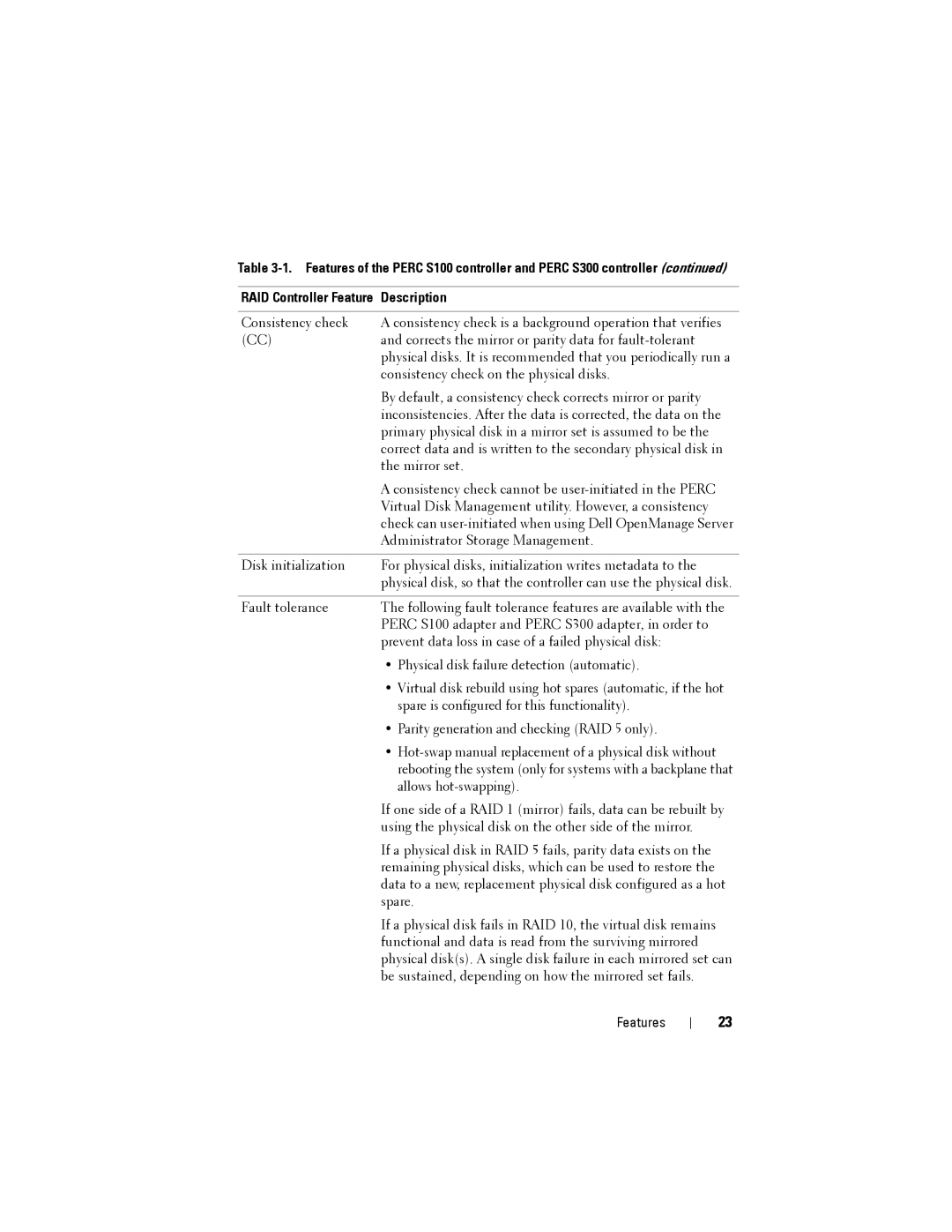Table
RAID Controller Feature | Description |
|
|
Consistency check | A consistency check is a background operation that verifies |
(CC) | and corrects the mirror or parity data for |
| physical disks. It is recommended that you periodically run a |
| consistency check on the physical disks. |
| By default, a consistency check corrects mirror or parity |
| inconsistencies. After the data is corrected, the data on the |
| primary physical disk in a mirror set is assumed to be the |
| correct data and is written to the secondary physical disk in |
| the mirror set. |
| A consistency check cannot be |
| Virtual Disk Management utility. However, a consistency |
| check can |
| Administrator Storage Management. |
|
|
Disk initialization | For physical disks, initialization writes metadata to the |
| physical disk, so that the controller can use the physical disk. |
|
|
Fault tolerance | The following fault tolerance features are available with the |
| PERC S100 adapter and PERC S300 adapter, in order to |
| prevent data loss in case of a failed physical disk: |
| • Physical disk failure detection (automatic). |
| • Virtual disk rebuild using hot spares (automatic, if the hot |
| spare is configured for this functionality). |
| • Parity generation and checking (RAID 5 only). |
| • |
| rebooting the system (only for systems with a backplane that |
| allows |
| If one side of a RAID 1 (mirror) fails, data can be rebuilt by |
| using the physical disk on the other side of the mirror. |
| If a physical disk in RAID 5 fails, parity data exists on the |
| remaining physical disks, which can be used to restore the |
| data to a new, replacement physical disk configured as a hot |
| spare. |
| If a physical disk fails in RAID 10, the virtual disk remains |
| functional and data is read from the surviving mirrored |
| physical disk(s). A single disk failure in each mirrored set can |
| be sustained, depending on how the mirrored set fails. |
Features
23
